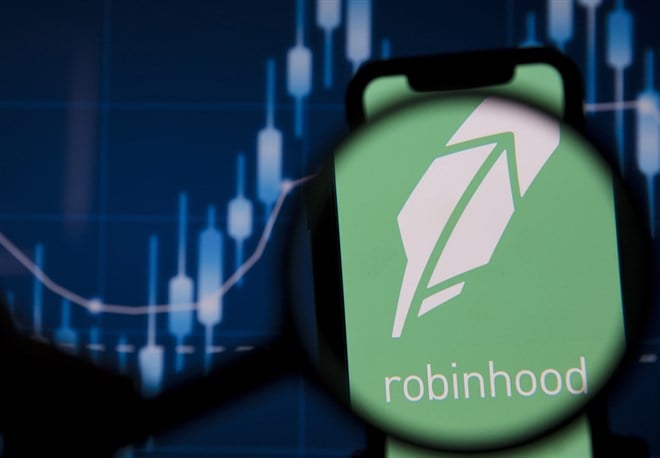
At least a dozen Wall Street analysts offering a 12-month price target on Robinhood Markets Inc (NASDAQ: HOOD) stock across the last three months, have given Robinhood Markets a HOLD rating.
Why a HOLD Rating, Not a BUY
A HOLD rating makes more sense than a BUY rating when you consider three factors. First of all, the average price target right now is about $11.53 with a low price target of $5 and a high price target of $28. That is quite a dramatic margin; but the rating aligns with the fact that the average price target is still within the lower third of the range. Secondly, the most recent average price target is not even 40 percent above the last price of $8.24, which means it is not growing as quickly as would be preferred. Finally, though, a hold rating feels warranted because the stock has been in dramatic decline since its peak of $56 on August 5, 2021.
While some analysts have given Robinhood Markets Inc a BUY rating every month this year, the HOLD consensus has remained more consistent. Again, the stock plummeted towards the end of last year; and while its descent could potentially continue, it does appear that the momentum is starting to slow down. And that, of course, indicates Robinhood Markets Inc stock might be poised for a rebound.
Unstable Early EPS Begins to Settle
Earnings Per Share has been quite an unsteady metric for the past 12 months. For example, analysts forecast for Q2 of 2021 ranged from 0.6 to 0.08, with a reasonable consensus estimate of -0.15. Unfortunately, actual reported earnings came far below analyst expectations, at -2.16. The same case is true in Q3 of 2021, when the -2.06 reported earnings missed the extremely wide analyst range of -1.61 to 1.93—and -0.79 consensus estimate—by a whopping -320.41 percent!
Things start to turn around, however, in the fourth quarter of 2021. For Q4 2021, analysts expected to see earnings per share in the range of -0.9 and -0.06, with a consensus estimate of -0.35. While the reported earnings of -0.49 was nearly 38.5 percent short of the consensus estimate, it was the first time actual EPS registered within the projected range, in the better part of a year. First quarter 2022 actually followed suit, here, with reported earnings of -0.45 failing to beat the -0.38 consensus estimate but still satisfying the far slimmer range of -0.44 to -0.26.
Robinhood IPO and Value
Robinhood filed for its initial public offering (IPO) on July 1, 2021. This S-1 registration came about six weeks after filing a confidential IPO. By the end of July, Robinhood Markets Incc was offering IPO shares at $38, leading into its debut on the NASDAQ index, on July 29, 2021. Selling approximately 52.4 million shares, this IPO provided Robinhood with an early valuation of $32 billion, besting the original valuation forecast.
Within a matter of days of its IPO, Robinhood shares peaked at a value of $56. Unfortunately, this was the beginning of a somewhat shocking—if not, steady—fall to where it is today, falling past its IPO value by November of 2021. At around $11 the share value has never been lower, and the forecast suggests this decline could continue.
Robinhood Markets Inc: A History
Founded in April 2013 by Vladimir Tenev and Baiju Bhatt, Robinhood aimed to “provide everyone with access to the financial markets, not just the wealthy”. Both Tenev and Bhatt had years of experience building high-frequency trading platforms for large financial institutions based in New York City and wanted to make these opportunities more accessible. Tenev, specifically, commented that while executing a trade cost may cost a brokerage firm “fractions of a penny”, they were still charging fees of up to $10 per trade while simultaneously requiring account minimums of $500 o $5,000.
It seems this focus on accessibility worked as the firm maintains a “millennial” demographic, with 80 percent of its client base under the age of 26, as of January of 2015. These younger investors tend to not have the kind of access to investing opportunities that older, more experienced—and more financially stable—investors usually have. App retention is higher than many, as at least fifty percent of Robinhood members who have made at least one trade use the app every day; 90 percent yes the app at least once a week.
As of 2022, Robinhood Markets Inc manages 22.8 million funded accounts among 15.9 million active users.
Companies in This Article: